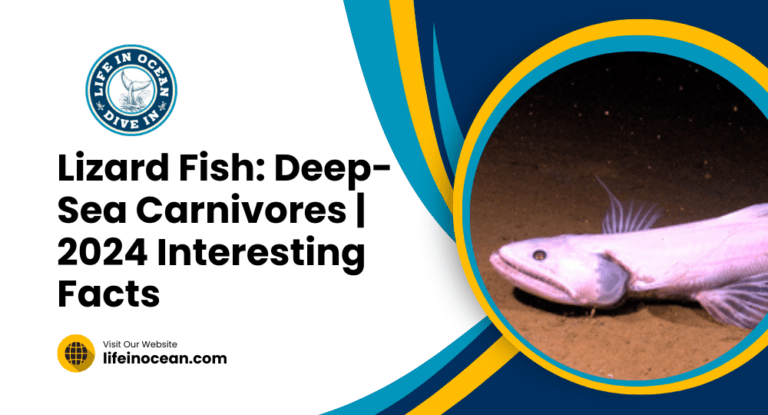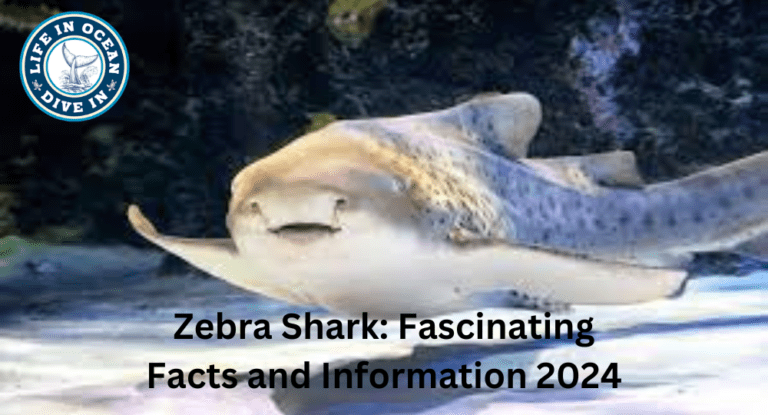A fascinating variety of fish species have evolved with large, distinctive lips. These big-lipped fish stand out in the underwater world due to their unique facial feature. The size and shape of their lips can vary greatly among different species, adding to their intriguing appearance. Found in both freshwater and saltwater environments, these fish have adapted their big lips for various purposes.
Their distinctive lips often play a crucial role in their feeding habits, allowing them to efficiently capture prey or sift through sediment for food. From the iconic anglerfish with its fleshy lure-like appendage to the aptly named big-lipped batfish, these remarkable creatures showcase the diversity and adaptability of marine life. Join us as we dive into the world of fish with big lips and explore the fascinating adaptations that make them so unique.
Table of Contents
Why do some fish have fat lips?
Fat or big lips in fish serve several purposes and provide advantages in their natural habitats. Let’s explore why these aquatic creatures sport such unique features.
Aid in suction feeding
Fish with fat or big lips often use them for suction feeding. The fleshy nature of their lips helps create a vacuum-like effect, allowing them to capture prey more effectively. When the fish opens its mouth rapidly, the large lips expand, creating a powerful suction force that pulls water and prey towards its mouth. This specialized feeding technique enables these fish to consume smaller organisms without expending too much energy.
Capture prey
The presence of fat or big lips provides an advantage. Fish with larger lips have an increased surface area, which allows them to engulf a greater volume of water along with any potential food sources within it. As the fish closes its mouth, the excess water is expelled through the gills while retaining the captured prey inside.
Scraping algae off rocks or coral reefs
Some species of fish utilize their large lips to scrape algae off rocks or coral reefs. These specialized feeders rely on their robust lip structure to graze on surfaces covered in algae and extract nourishment from it.
Gourami
Gouramis are a popular choice for aquarium enthusiasts due to their vibrant colors and unique features. These tropical freshwater fish belong to the family Osphronemidae and are known for their labyrinth organs, which allow them to breathe atmospheric air. One striking characteristic of many gourami species is their prominent, thickened, and fleshy lips.
Prominent Lips for Efficient Feeding
The big lips of gouramis serve an important purpose in their natural habitat. These specialized mouthparts enable them to feed efficiently on insects at the water’s surface. With their big lips, gouramis can create suction and quickly slurp up insects that land on the water. This feeding behavior makes them excellent hunters and adds to their overall appeal as aquarium fish.
Bubble Nests: A Unique Breeding Behavior
In addition to aiding in feeding, gouramis also use their specialized mouthparts during the breeding season. Male gouramis construct bubble nests at the water’s surface using a combination of saliva and plant material held together by bubbles. The male will carefully blow bubbles into a floating mass, creating a safe space for the female to deposit her eggs.
Koi
Koi are special fish with plump lips. They use their big mouths to find food in the mud and gravel. People who like koi think it’s cool how each one has different lip shapes. The colors on their bodies even go onto their lips. Some collectors like koi with big lips more. This makes the koi world more interesting.
Unique Lip Shapes
Koi come in various sizes, colors, and patterns, but it’s their lip shapes that truly set them apart. Some koi have lips that appear round and plump, while others may have more elongated or puckered lips. These unique lip shapes contribute to the overall beauty and charm of these fish.
Mud Sifters
Koi’s largemouths play an important role in their feeding habits. As bottom dwellers, they use their specialized lips to sift through mud and gravel in search of food.
Piranha
Piranhas have sharp teeth and big lips that help them catch and eat their prey. The size and shape of their lips can be different depending on the species, but not all piranhas have super sharp teeth or really big lips. The way a piranha’s lips look can change because of things like how old they are, what they eat, and where they live. Piranhas are a kind of fish that live in warm waters in South America.
They can be found in rivers, lakes, and flooded forests. They are good at surviving in these places because of how they look. Piranhas are interesting because of how they eat. Even though people think they only eat meat, they eat both plants and animals.
Pacu
Pacus are freshwater fish that look like piranhas and have big lips. These lips help them crush hard nuts and fruits in the water. Their lips make them different from other fish and they can eat lots of different things. Some people like to catch pacus for fun, especially in the Pacific region where there are a lot of them.
Big Lips for Crushing Nuts and Fruits
One of the main reasons why pacus have developed such large, thickened lips is their diet. In their natural habitat, pacus primarily feed on plant matter such as nuts and fruits that fall into the water from overhanging trees or vegetation. Their powerful jaws and strong teeth work in conjunction with their big lips to crush these hard food items effectively.
Paddletail Snapper
Paddletail snappers are a fascinating species of fish known for their distinctive features, including elongated, paddle-shaped tails and big lips. These reef-dwelling fish can be found primarily in the Indo-Pacific region. Let’s delve deeper into the unique characteristics of paddle-tail snappers.
Elongated Tails and Distinctive Lips
One of the most striking features of paddle tail snappers is their elongated tails, which resemble paddles. This unique tail shape allows them to maneuver swiftly through the water, making them excellent swimmers. These fish possess distinctive lips that set them apart from other species. Their big lower lip aids in their feeding techniques and plays a crucial role in capturing prey.
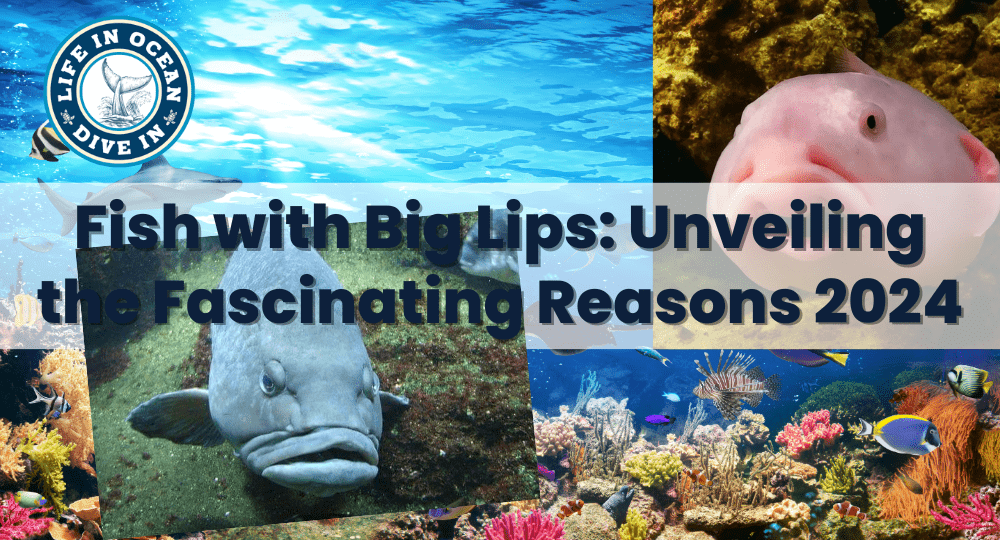
Specialized Mouths for Feeding
Paddletail snappers have specialized mouths designed to facilitate their feeding habits. These fish primarily feed on small invertebrates found within coral reefs. With their suction feeding technique, they create a vacuum-like effect by rapidly opening and closing their mouths, allowing them to capture unsuspecting prey effortlessly. The paddle-shaped tail assists in quick movements while hunting for food.
Sweetlips Fish
Sweetlips fish are a fascinating species that belong to the grunt family. These marine creatures are known for their distinctive feature – big, plump lips that give them an adorable appearance.
Plump Lips for a Purpose
The unique characteristic of sweetlip fish is their large, puckered mouths. These impressive lips serve a practical purpose – they allow the fish to feed on various bottom-dwelling organisms like crustaceans and mollusks. With their specialized mouths, sweetlips can suction-feed on prey items found in sandy or muddy substrates.
Lipstick Markings
Some species of sweetlips exhibit coloration patterns on their large lips that resemble lipstick marks. These vivid markings add to the charm of these tropical marine fish and make them even more visually striking. The vibrant hues and patterns on their lips vary among different species, creating a diverse array of lip art in the underwater world.
Habitat and Distribution
Sweetlips fish can be found across coral reefs in the Indo-Pacific region. Their preferred habitats include both shallow and deeper waters with abundant coral formations. These colorful fish thrive in warm tropical waters and are commonly encountered by divers and snorkelers exploring reef ecosystems.
Carp
Carp species, such as the common carp, are known for their distinctive feature – big lips! These fish possess thick and fleshy lips that aid them in their feeding habits. Let’s delve into the fascinating world of carp and explore why they have such unique lips.
Bottom Feeders with Big Lips
One of the primary reasons why carp have big lips is because they are bottom feeders. Their large, fleshy lips allow them to sift through mud and detritus on the river or lake bed in search of food. By using their specialized lips, carp can root around insects, crustaceans, plants, and other small organisms that make up their diet. It’s like having a built-in vacuum cleaner!
Adaptability at its Finest
Carp are renowned for their adaptability to various aquatic environments. They can thrive in both freshwater and brackish water habitats, making them one of the most widespread fish species in the world. This adaptability also extends to their feeding behavior.
Their big lips enable them to consume a wide range of food sources found in different habitats.
Humphead Wrasse
The humphead wrasse, also known as the Napoleon wrasse, is a fascinating fish species that stands out due to its large protruding lips. These magnificent creatures possess unique lip morphology, which serves an important purpose in their specialized diet and hunting techniques.
Large Protruding Lips
One of the distinctive features of humphead wrasses is their prominent lips. These fish have big, fleshy lips that give them a rather comical appearance. The size and shape of their lips are specifically adapted to help them feed on hard-shelled prey such as mollusks and sea urchins.
Powerful Jaws for Crushing Prey
The humphead wrasse utilizes its powerful jaws to crush the tough shells of its preferred prey items. With their robust jaw muscles and sturdy teeth, they can easily break open the shells and access the nutritious flesh inside. This feeding strategy allows them to consume a variety of hard-bodied marine creatures that other fish might struggle with.
Specialized Diet
The unique lip morphology of humphead wrasses plays a crucial role in their specialized diet. Their ability to crush hard-shelled prey gives them an advantage in coral reef ecosystems where such food sources are abundant.
Triggerfish
Triggerfish are a type of fish known for their robust bodies and distinctive mouths with strong jaws. These fish have a unique feature that sets them apart from other species – big, fleshy lips. These prominent lips aid in capturing prey from crevices or coral reefs. Let’s take a closer look at these fascinating creatures.
Distinctive Mouths and Lips
One of the defining characteristics of triggerfish is their impressive mouths with sharp teeth and big lips. These lips serve a specific purpose in the fish’s hunting strategy. With their powerful jaws, triggerfish can pry open crevices or cracks to access hidden prey such as crabs or small crustaceans. The fleshy lips help create suction, allowing them to extract their meal with ease.
The “Trigger” Mechanism
Another interesting aspect of triggerfish is the “trigger” mechanism found in their dorsal fins. This mechanism consists of two spines, one larger than the other. When the smaller spine is depressed, it locks into place behind the larger spine, preventing predators or other threats from swallowing them whole.
This unique adaptation also serves as a territorial display among triggerfish themselves. They use this mechanism to establish dominance and protect their territory from intruders.
Angelfish
Angelfish, belonging to the cichlid family, are known for their laterally compressed bodies. These unique creatures display plump, pouty lips that add charm to their appearance. Their big lips serve a purpose beyond aesthetics – they allow angelfish to feed on small organisms such as insects, crustaceans, or plant matter.
Diverse Coloration Patterns
One fascinating aspect of angelfish is their diverse coloration patterns. Depending on the specific species or geographical location, these fish can exhibit an array of vibrant colors and intricate markings. From bold stripes to delicate patterns, each angelfish species showcases its distinct beauty. This makes them a popular choice for aquarium enthusiasts who appreciate the stunning visual appeal these fish bring to their tanks.
Native to South America
Angelfish are native to freshwater habitats in South America. They can be found in various countries across the continent, including Brazil, Guyana, and Venezuela. These fish thrive in warm waters with moderate acidity levels. In their natural habitat, they often inhabit slow-moving rivers and streams surrounded by lush vegetation.
Freshwater Angelfish
Freshwater angelfish, a specific group within the angelfish family, are known for their distinctive lips. These fish possess big lips that serve a purpose beyond just looking cute. Their unique feature facilitates their feeding habits and contributes to their overall appearance and individuality.
Distinctive Lips for Feeding
The big lips of freshwater angelfish play a crucial role in their diet. These fish primarily feed on small invertebrates and plant matter found in their natural habitat. The size and shape of their lips allow them to efficiently capture and consume these food sources. With their large, fleshy lips, they can easily suck up tiny organisms like worms, insects, and even small crustaceans.
Color Variations and Fin Shapes
Freshwater angelfish exhibit a wide range of color variations and fin shapes, making them popular choices for aquarium enthusiasts. Some common color variations include silver, black, gold, marble, and even albino varieties. They have long flowing fins that add to their graceful appearance when swimming through the water.
Selective Breeding for Different Traits
Over the years, freshwater angelfish have been selectively bred for different traits by breeders around the world.
Flowerhorn Fish
Flowerhorn fish are hybrid cichlids known for their unique head protuberance and large lips. These ornamental fish have become quite popular among aquarium enthusiasts due to their vibrant colors and distinct facial features. Let’s explore some fascinating facts about flowerhorn fish!
Unique Facial Features
One of the most striking features of the flower horn fish is its big lips. These large lips serve a purpose beyond just aesthetics – they aid in capturing prey and sifting through the substrate for food particles. The size of the lips can vary depending on the specific breeding lines or strains, with some individuals having more pronounced lips than others.
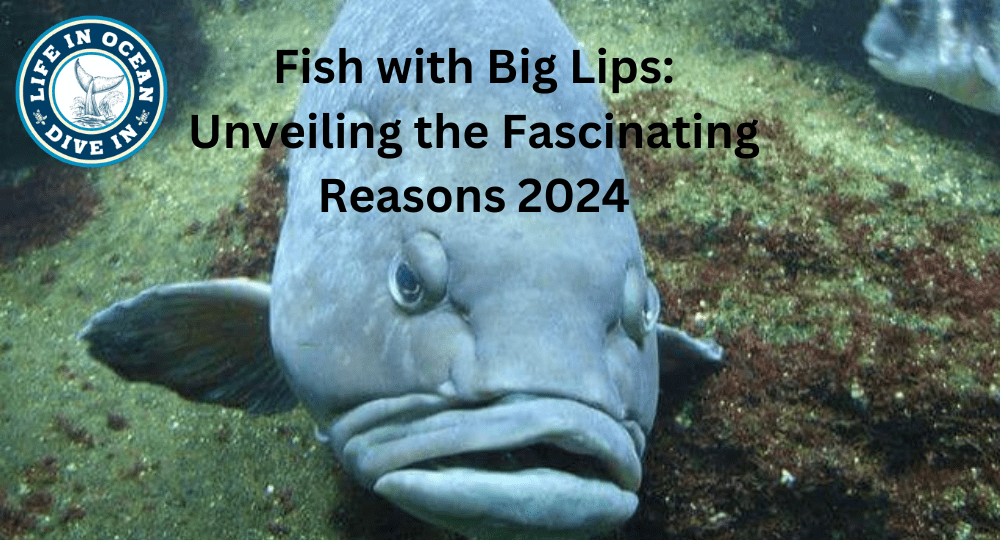
Vibrant Colors
Flowerhorns are known for their vibrant colors, which can range from bright reds and oranges to blues, greens, and even purples. Their vivid hues make them stand out in any aquarium setting, adding a splash of color and liveliness to the tank.
Selective Breeding Origins
The origins of flowerhorn fish can be traced back to selective breeding efforts involving several cichlid species. Breeders aimed to create a visually appealing hybrid with unique characteristics, resulting in the creation of these stunning creatures we know today.
Napoleon Fish
Napoleon fish, also known as humphead wrasses, are a fascinating species of fish that possess large fleshy lips. These prominent mouths allow them to feed on a variety of prey such as mollusks and crustaceans.
Large Fleshy Lips
One distinguishing feature of the Napoleon fish is their big lips. These tips are not just for show; they serve a purpose in the fish’s feeding habits. The large size and fleshy nature of their lips enable them to create suction and inhale their prey with ease. By expanding their mouths, they can engulf small creatures like mollusks and crustaceans in one swift motion.
Reef-Dwelling Giants
Napoleon fish are among the largest reef-dwelling fish species in the world. They can grow up to six feet long and weigh over 200 pounds! With their vibrant colors and impressive size, they are truly a sight to behold underwater.
Vital Role in Coral Reef Ecosystems
These iconic marine creatures play a vital role in maintaining coral reef ecosystems. As predators, Napoleon fish help control populations of smaller organisms, preventing them from overwhelming the delicate balance within the ecosystem.
Giant Grouper
Giant groupers are known for their impressive appearance, thanks to their fish with big lips. These massive predatory fish exhibit thick, fleshy lips that contribute to their imposing presence. Their big mouths serve a purpose beyond aesthetics – they enable them to swallow relatively large prey whole.
Imposing Appearance
One of the distinguishing features of giant groupers is their thick, fleshy lips. These prominent lips give them a unique and intimidating look. The size and structure of their mouths allow them to engulf prey in one swift motion. This characteristic sets them apart from other fish species and adds to their overall allure.
Impressive Size
Giant groupers live up to their name by reaching staggering lengths of over 8 feet (2.5 meters). These colossal creatures can weigh up to 800 pounds (363 kilograms), making them one of the largest bony fishes in the ocean. Their immense size further contributes to their awe-inspiring presence.
Habitat and Distribution
These fascinating fish inhabit reefs and rocky areas across the Indo-Pacific region. From the Red Sea and East Africa to Australia, Japan, and Hawaii, giant groupers can be found in various warm coastal waters. Their broad distribution highlights the adaptability of this species across different marine environments.
Common Pleco
The Common Pleco, also known as the suckermouth catfish, is a fascinating fish species that possesses large lips with a sucker-like structure. These big lips serve an important purpose for the plecos in their natural habitat and make them unique among other fish.
Grazing on Algae and Detritus
One of the primary functions of the Common Pleco’s big lips is to aid in grazing on algae and detritus from various surfaces. These armored catfish have a voracious appetite for algae and can often be seen attached to rocks, driftwood, or even the glass walls of an aquarium, using their suction-like mouths to scrape off and consume algae. Their specialized lips allow them to cling tightly to surfaces while they feed, making them highly efficient cleaners.
Popular Aquarium Fish
Due to their ability to clean tank surfaces effectively, Common Plecos are incredibly popular among aquarium enthusiasts. Many people keep them in their tanks specifically for their cleaning abilities. The large lips of these catfish enable them to remove unsightly algae growth from rocks, plants, and decorations within the aquarium. This not only helps maintain a visually appealing tank but also contributes to better water quality by reducing excess nutrients.
Queensland Grouper
The Queensland grouper, also known as the giant grouper or brindle bass, is a fascinating species of fish that can be easily recognized by its distinctive feature – big lips. These massive reef-dwelling fish display thick fleshy lips that set them apart from other species in the ocean.
Thick Fleshy Lips
One of the most striking characteristics of the Queensland grouper is its big mouth and thick fleshy lips. These features allow them to consume a wide range of prey including fish, crustaceans, and cephalopods. With their powerful jaws and large mouths, they are capable of engulfing their prey in one swift motion. This unique adaptation enables them to thrive in their natural habitat and ensures they have access to an abundant food source.
Impressive Size
The Queensland grouper is not only known for its big lips but also for its impressive size. These magnificent creatures can grow up to lengths of 10 feet (3 meters) and weigh over 800 pounds (363 kilograms). Just imagine encountering a fish that’s almost as tall as your bedroom ceiling! Their sheer size makes them a sight to behold and adds to their allure.
Red Shoulder Peacock Cichlid
Red shoulder peacock cichlids are a vibrant and eye-catching species that captivate aquarium enthusiasts with their stunning appearance. These African cichlids, also known as Aulonocara hansbaenschi, display a remarkable combination of colors and unique red markings on their shoulders. Let’s delve into some fascinating details about these fish with big lips.
Vibrant Colors and Distinctive Markings
One of the standout features of red-shoulder peacock cichlids is their vibrant coloration. Their bodies showcase an array of hues, ranging from shades of blue, yellow, orange, and even purple. These striking colors make them a mesmerizing addition to any aquarium setup.
In addition to their vivid colors, red shoulder peacock cichlids boast distinctive red markings on their shoulders. This feature sets them apart from other species within the Aulonocara genus. The bright red patches enhance their overall beauty and make them instantly recognizable.
Plump Lips for Specialized Feeding
Red shoulder peacock cichlids have another unique characteristic – they possess plump lips that serve a specific purpose in their feeding behavior.
Napoleon Wrasse
Napoleon wrasses are interesting fish with big lips. These lips help them eat hard food like mollusks. They are different from other reef fish because of this. Napoleon wrasses are found in the Indo-Pacific region and are colorful and big. They can be over 6 feet long and weigh more than 400 pounds. However, they are endangered because of overfishing and habitat damage.
Stonefish
Stonefish are venomous marine fish known for their ability to camouflage with their surroundings. These fascinating creatures have large lips that aid in capturing prey, primarily small fish or crustaceans that venture too close. However, it’s important to note that stonefish possess potent venomous spines on their dorsal fins, making them one of the most dangerous fish species in the ocean.
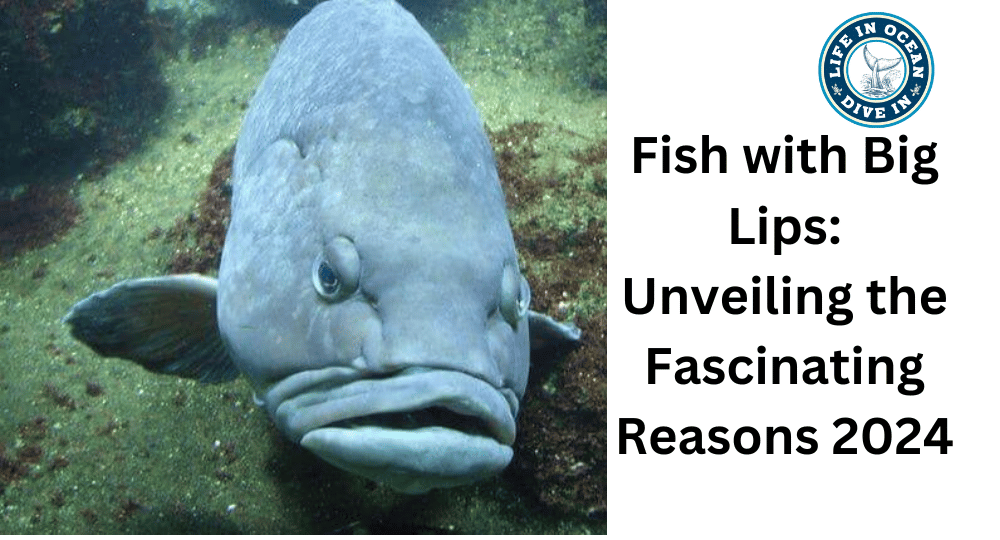
Camouflage and Habitat
Stonefish inhabit shallow coastal waters in the Indo-Pacific region and are often found hiding among rocks or coral reefs. Their ability to blend seamlessly with their environment is due to their unique markings and coloration. The stonefish’s appearance allows it to remain undetected by both predators and unsuspecting prey.
Hunting Mechanisms
Stonefish rely on their unique lip structures for efficient hunting and defense mechanisms. Their large lips enable them to create a suction-like effect when striking at prey, ensuring a successful capture. This specialized adaptation allows stonefish to consume a varied diet consisting of small fish and crustaceans.
Venomous Spines
One of the defining features of stonefish is the presence of venomous spines on their dorsal fins.
Sarcastic Fringehead
The sarcastic fringehead is a small and aggressive fish found on the Pacific coast of North America. They have big lips that make them look tough. When they feel threatened, they stick out their lips to show they mean business. They also fight each other by locking their mouths together. The winner gets to keep their territory. Male sarcastic fringeheads take care of the eggs after they are fertilized.
Big-Lip Damselfish
Big-lip damselfish, belonging to the Pomacentridae family, are unique marine creatures that exhibit distinctive thickened lips. These fish have mouths that are larger than those of other damselfish species, allowing them to feed on a variety of food sources such as algae or small invertebrates.
Varied Diet and Distribution
The big mouths of these colorful reef-dwelling fish enable them to consume different types of food. They can graze on algae found on coral reefs or feed on small invertebrates that reside within crevices. This diverse diet plays a crucial role in maintaining the balance of the coral reef ecosystem.
Found across the Indo-Pacific region, big-lip damselfish can be observed in various habitats ranging from shallow coastal reefs to deeper offshore areas. Their distribution spans from the Red Sea and East Africa to Indonesia, Australia, and even parts of Japan.
Ecological Importance
Big-lip damselfish play an essential role in maintaining coral reef ecosystems through their grazing activities. By feeding on algae, they help prevent overgrowth and maintain a healthy balance between corals and other organisms. Their foraging behavior contributes to the overall health and biodiversity of the reef by creating space for new corals to grow.
Red Snapper
The red snapper is a tasty fish with a unique look. It has a big upper jaw that sticks out, which makes it special. People like to catch red snappers and eat them because they are big and have a bright red color. Fish have different features that help them survive in different places. Some fish have special organs and body parts that are interesting to learn about. If you like fish or want to see underwater life, you can visit an aquarium or go snorkeling or scuba diving.
You will see how beautiful and diverse aquatic life is. So why not explore the world of fish with big lips? Whether you like fishing or want to learn more about marine biology, it will be an interesting journey. Just remember to follow the rules and be responsible when fishing to protect the environment. By being curious and learning about nature, we can understand and appreciate all its creatures – even those with big lips!
FAQs
FAQ 1: What are some fish with big lips?
If you’re looking for fish with big lips, you’re in for a treat! Here are a few fascinating species that fit the bill:
- The Napoleon Wrasse: This majestic creature boasts large, fleshy lips that give it a distinctive appearance. Found in the Indo-Pacific region, it’s known for its vibrant colors and impressive size.
- The Parrotfish: With their beak-like mouths and plump lips, parrotfish are hard to miss. These tropical beauties play a vital role in coral reef ecosystems.
- The Pufferfish: Don’t let their cute looks fool you – pufferfish have impressively pouty lips. They can inflate themselves into round balls when threatened, making them unique.
If you want to learn more about these fascinating fish or explore other species with big lips, we’ve got you covered!



